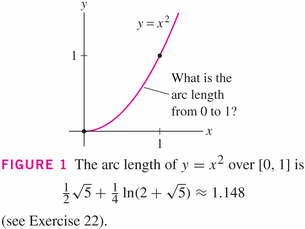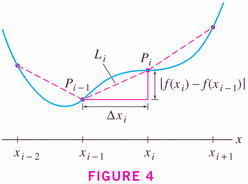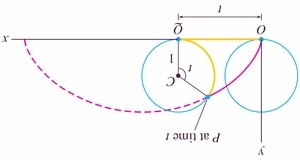- Homework 7.7 is returned
- 2 -- LRR is an overestimate, RRR is an underestimate; Trap is the average of those (but we can say more, right Mark?), and Mid is the other. How do we know what we know?
- 28 -- I wrote Mathematica Routines (based on one I stole!)
to do these. That's easier than doing them all by hand.
What's the true value of the integral? Compare your answers to that, first of all, to see if you're in the ballpark.
How does the error change as the number of subintervals doubles?
- 30 -- For this one, I used the 1,4,2,4,2-step pattern.
First of all, estimate the value of the area.
Don't forget units (meter squared), and don't forget the endpoint values -- 0 at both ends.
- Please read section 10.2 for
next time.
- A note about Friday's help session: Excel spreadsheets and approximate integration
- What kinds of problems are we looking at in this section?
Calculating the linear length of a curve (arc length).

- Let's consider arc length:
The usual trick is to discretize something continuous, and then pass to a limit:

Now hopefully we can figure out how the formula will look:

So what's the general formula?

- Examples:
- #2, p. 567
- #3, p. 567
- #37, p. 568




